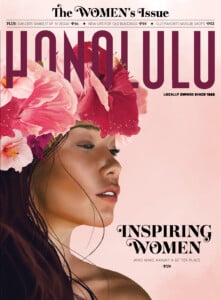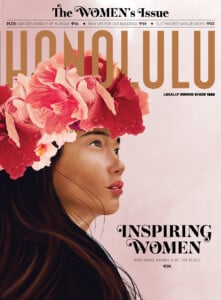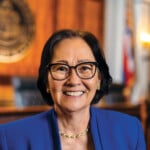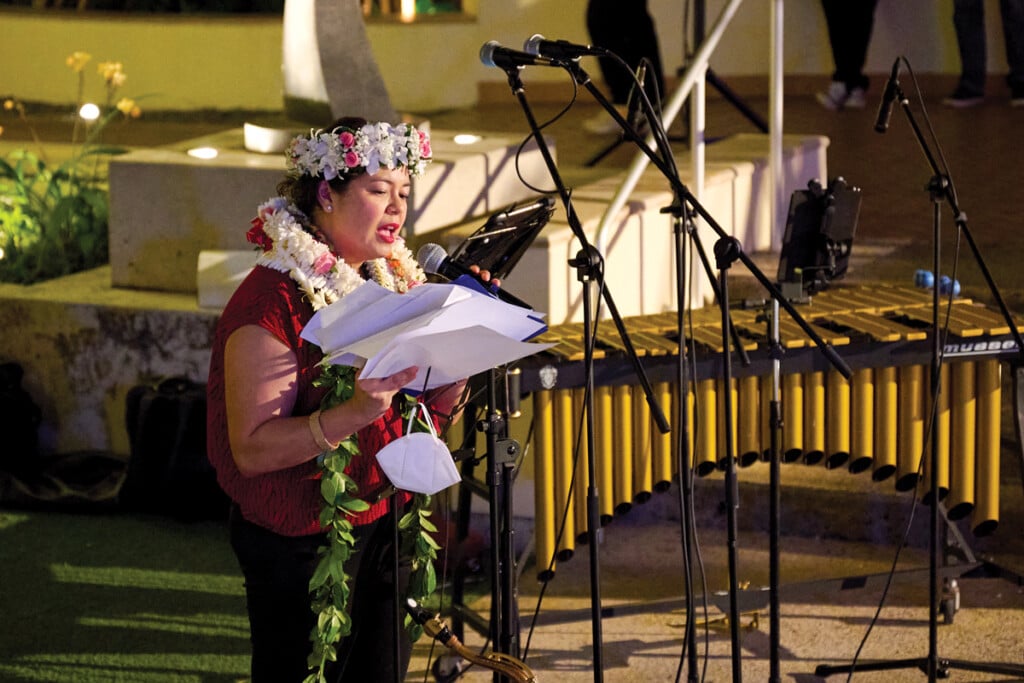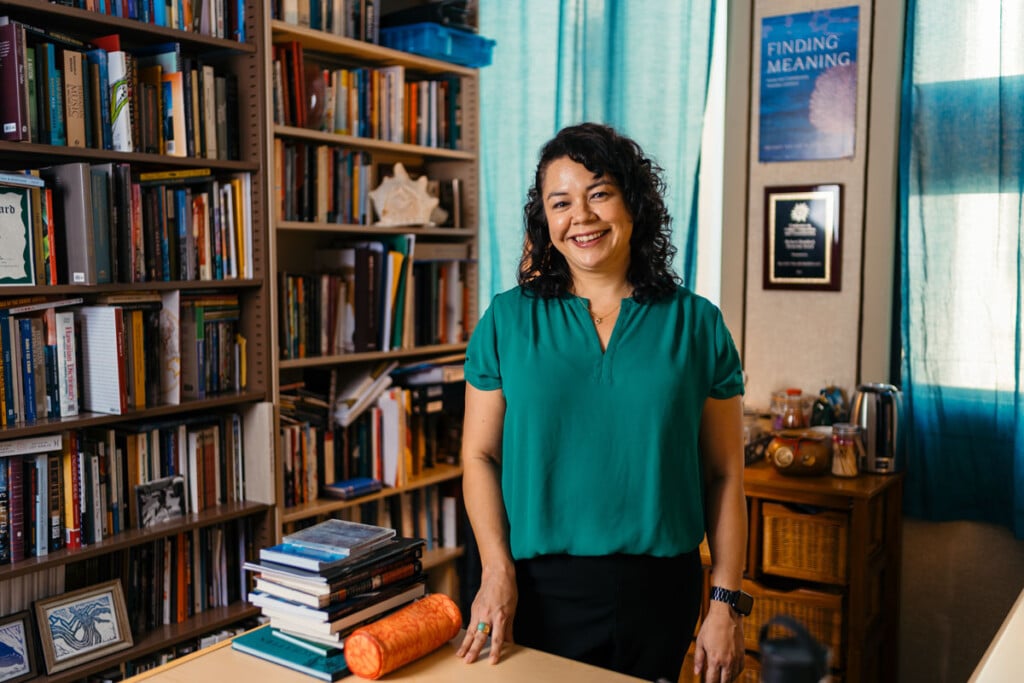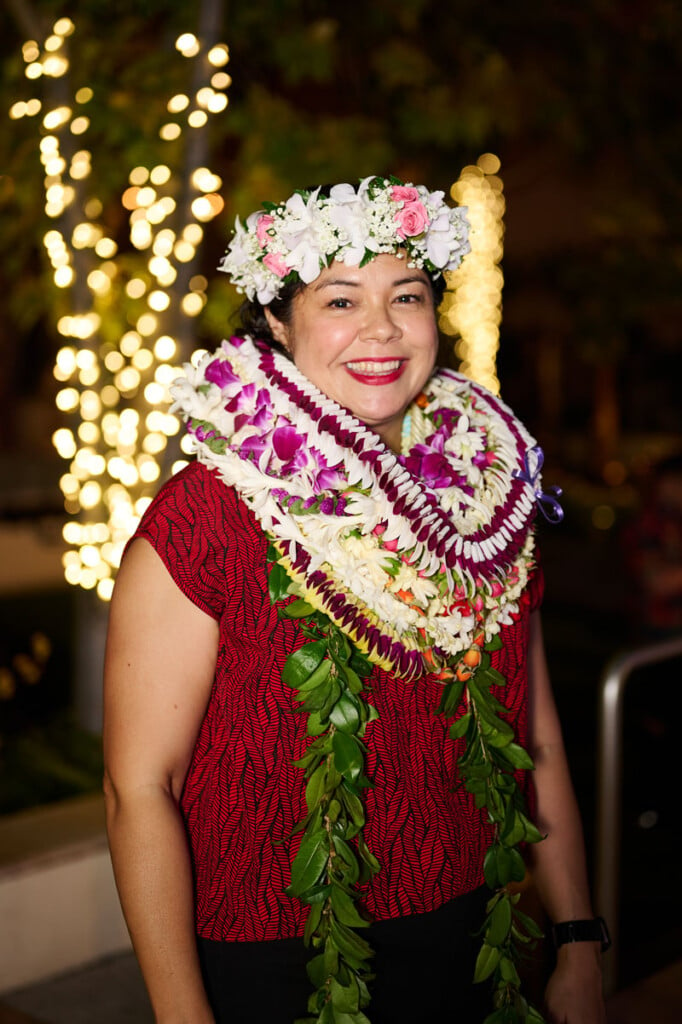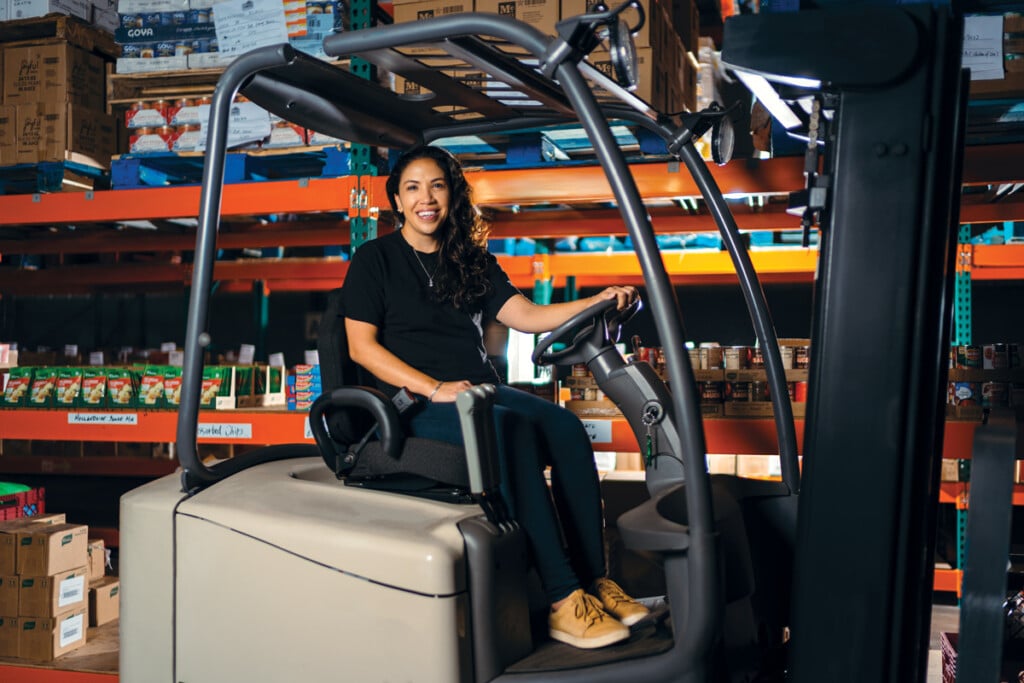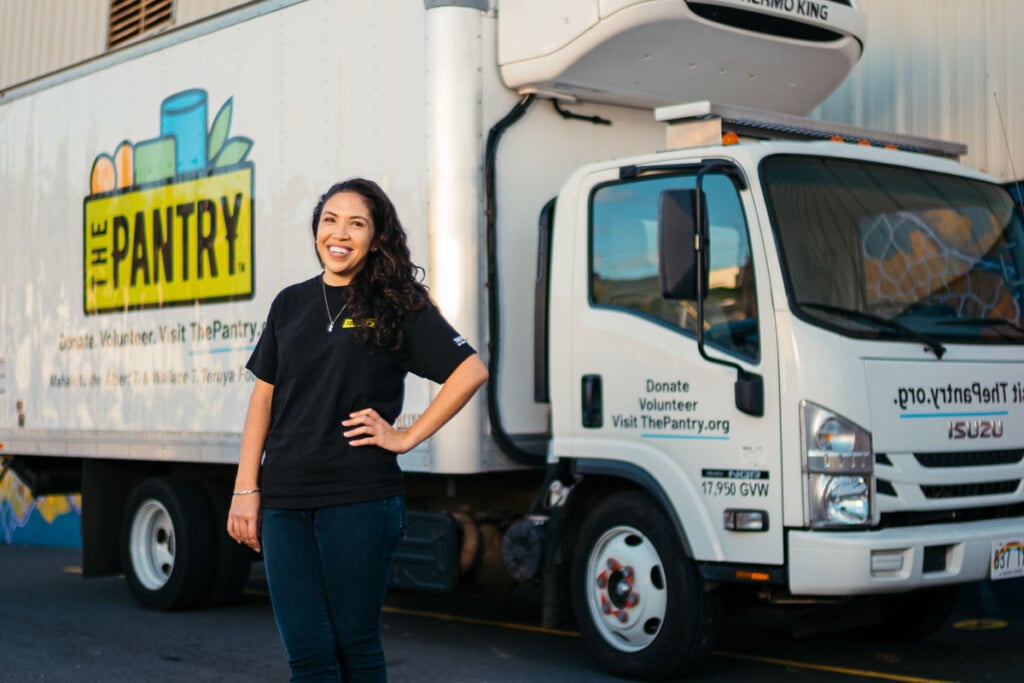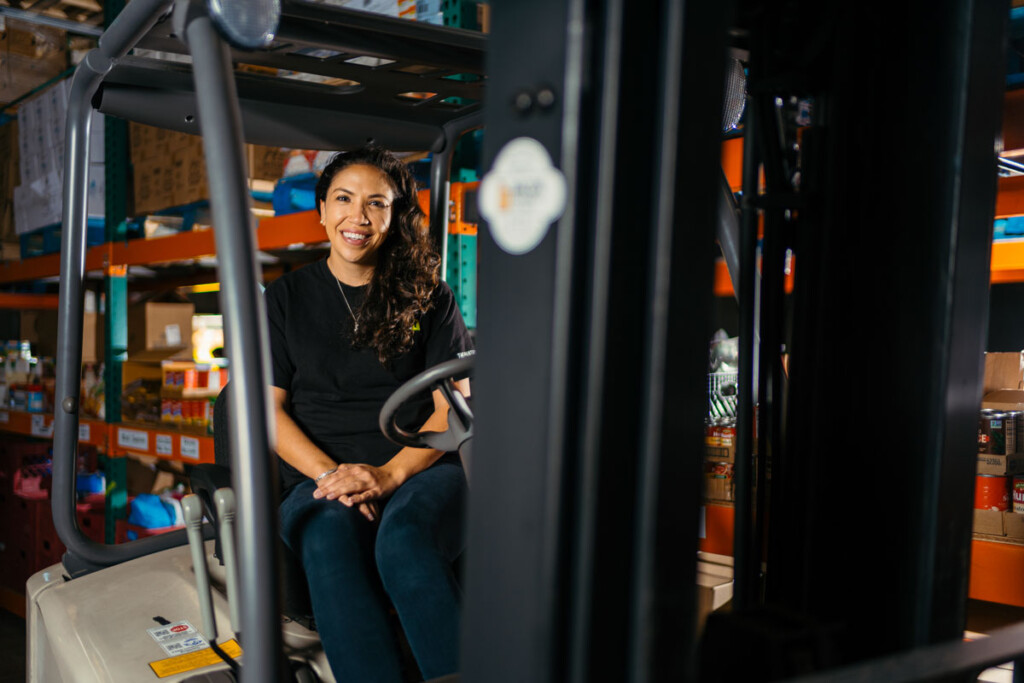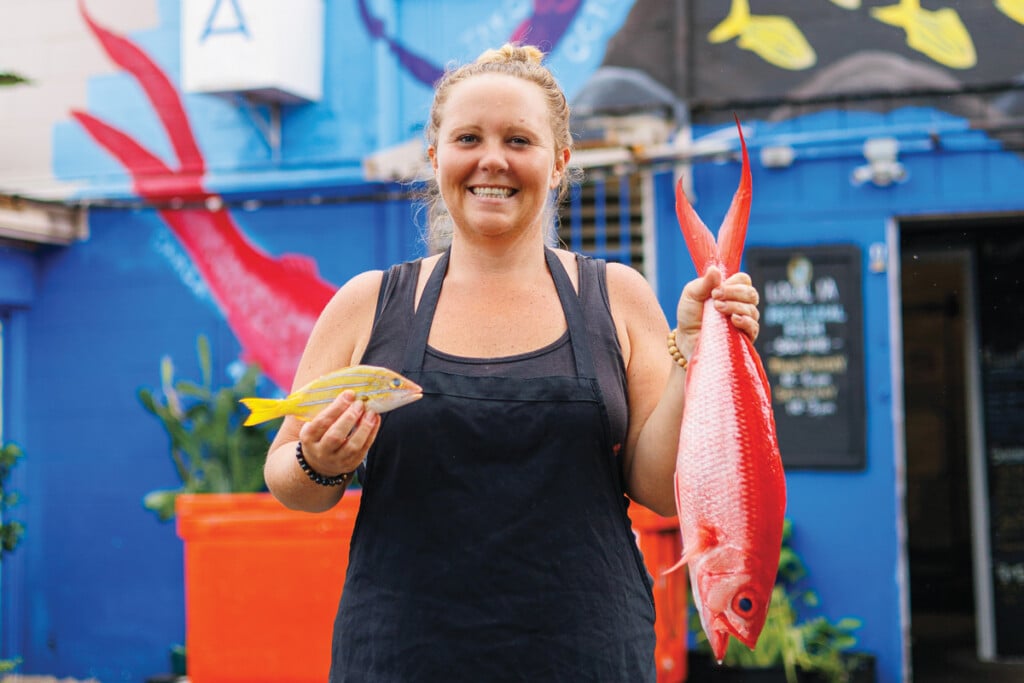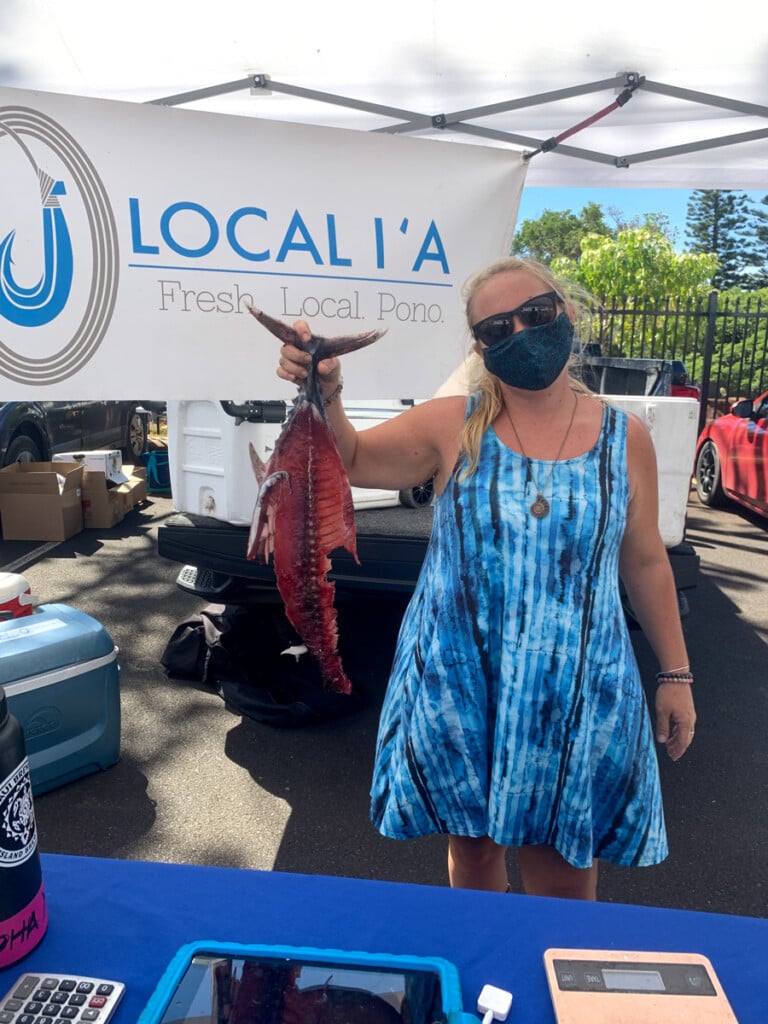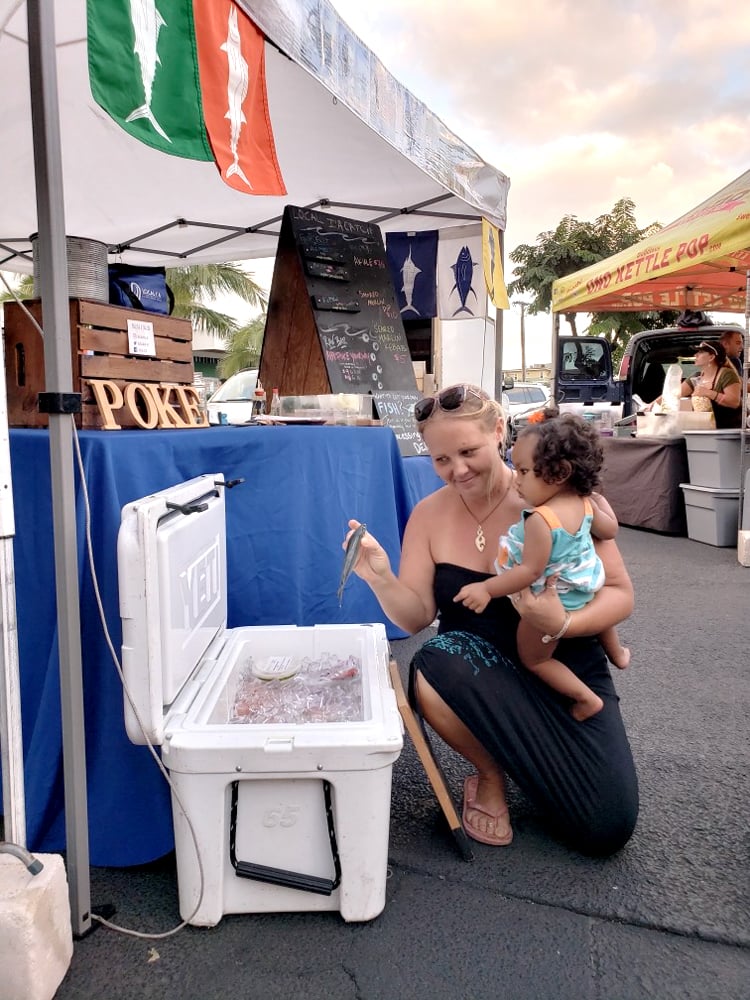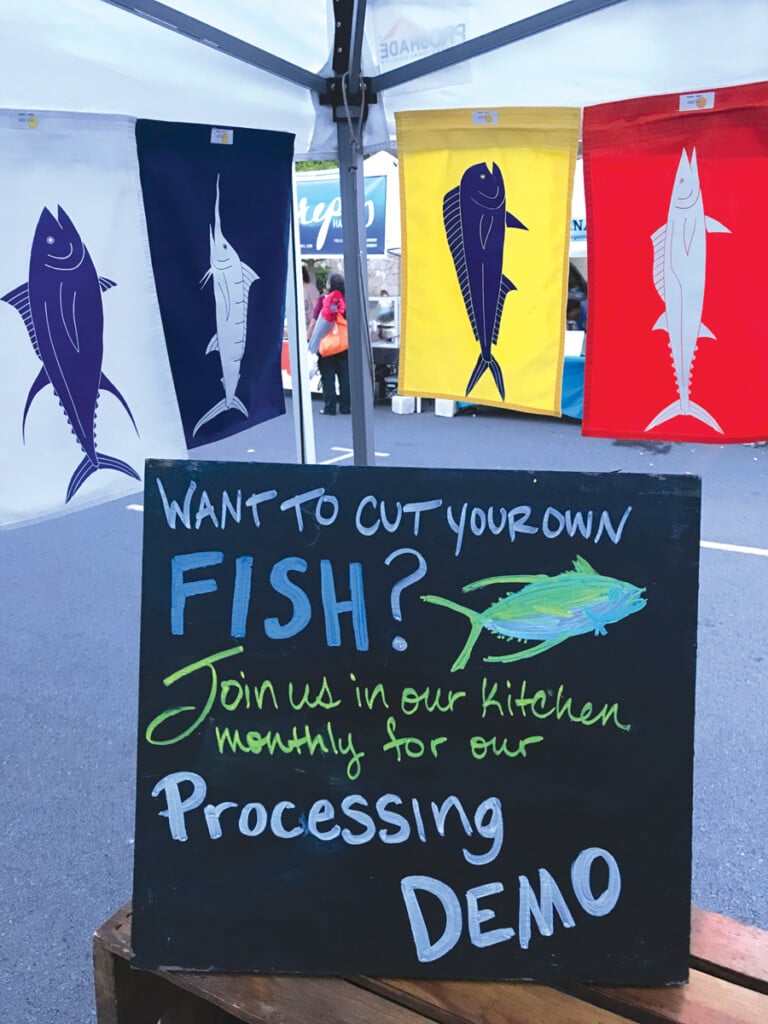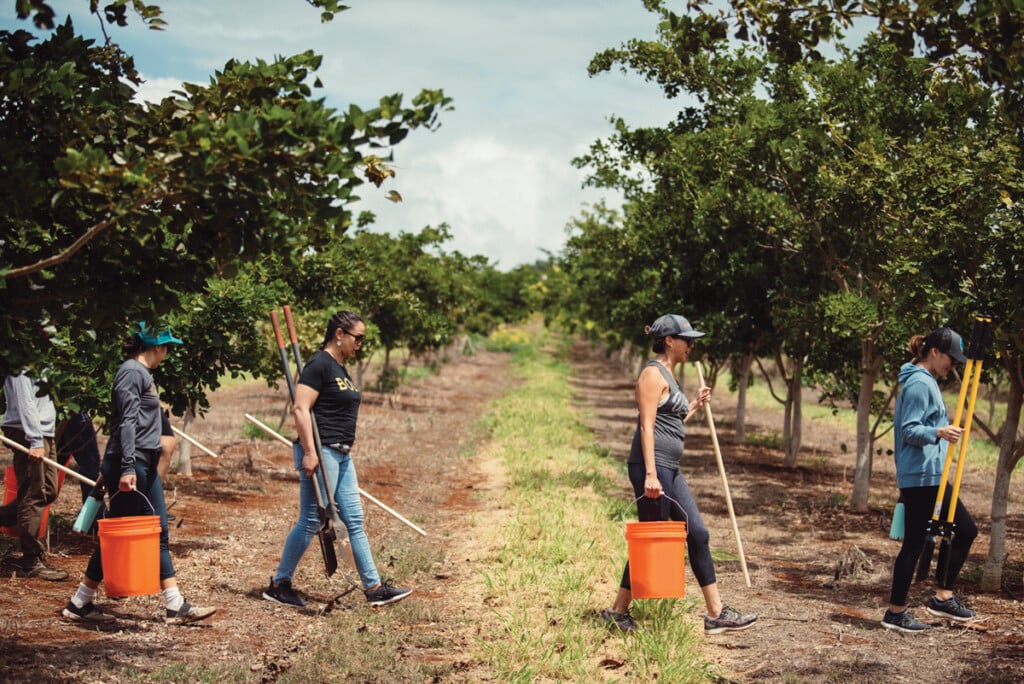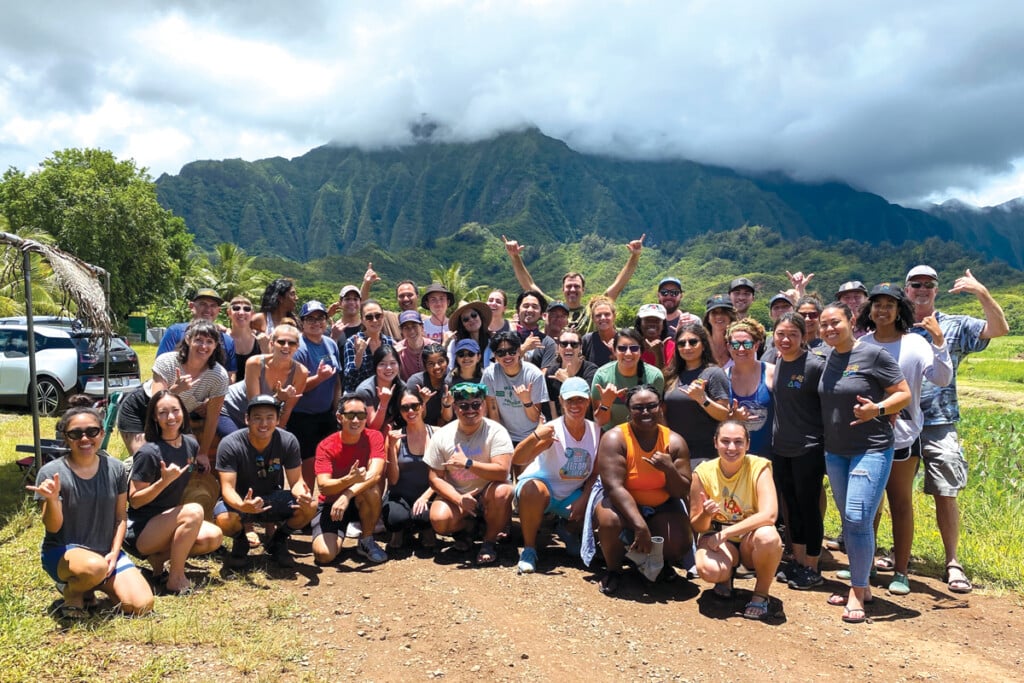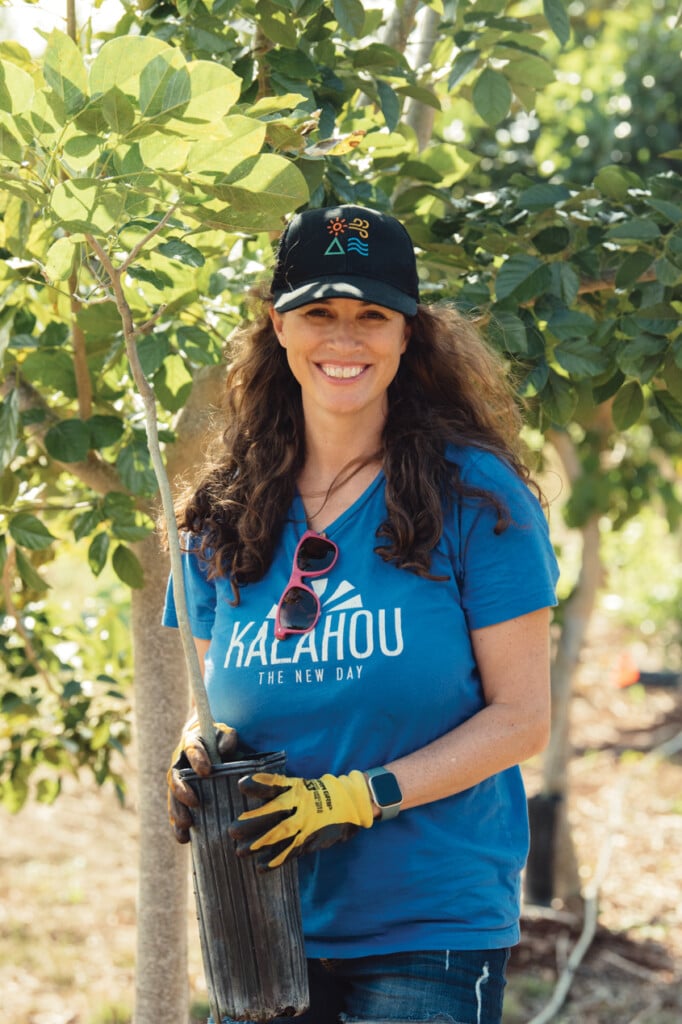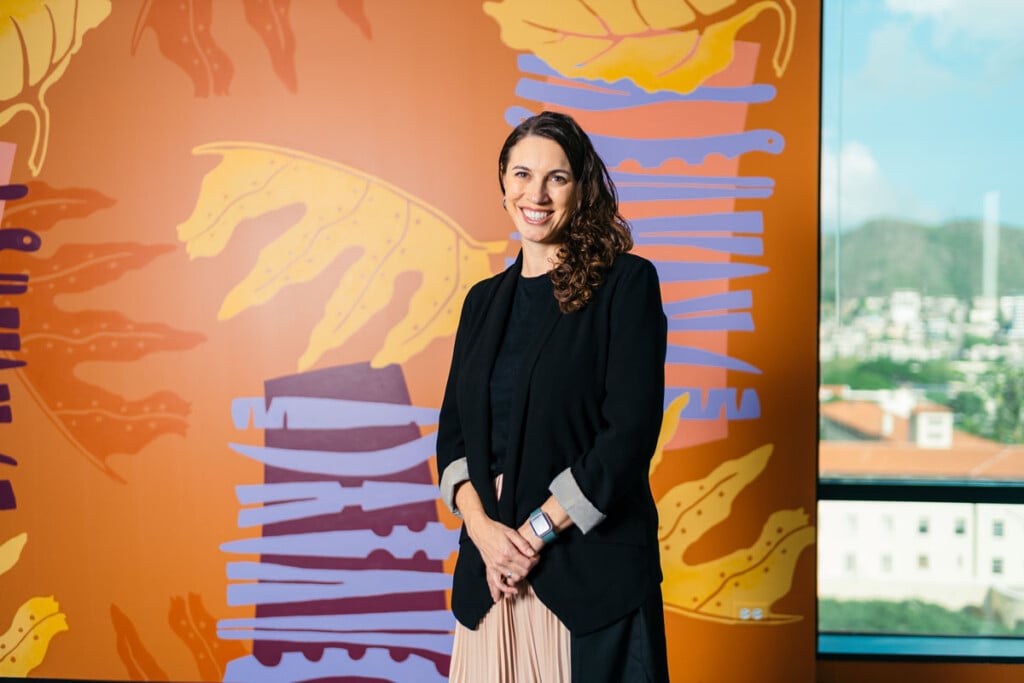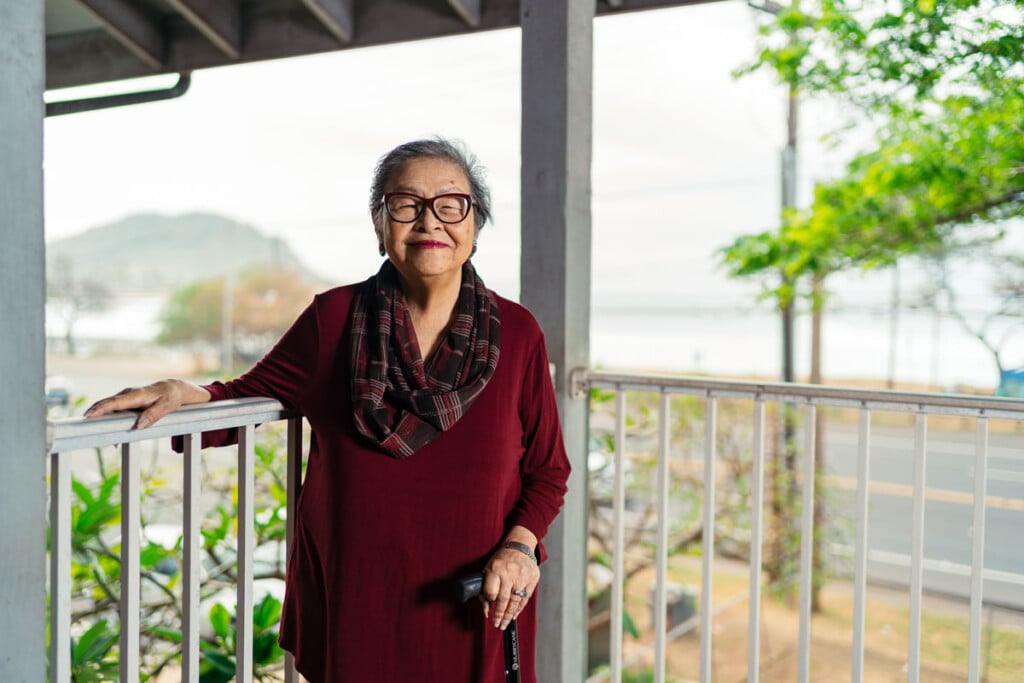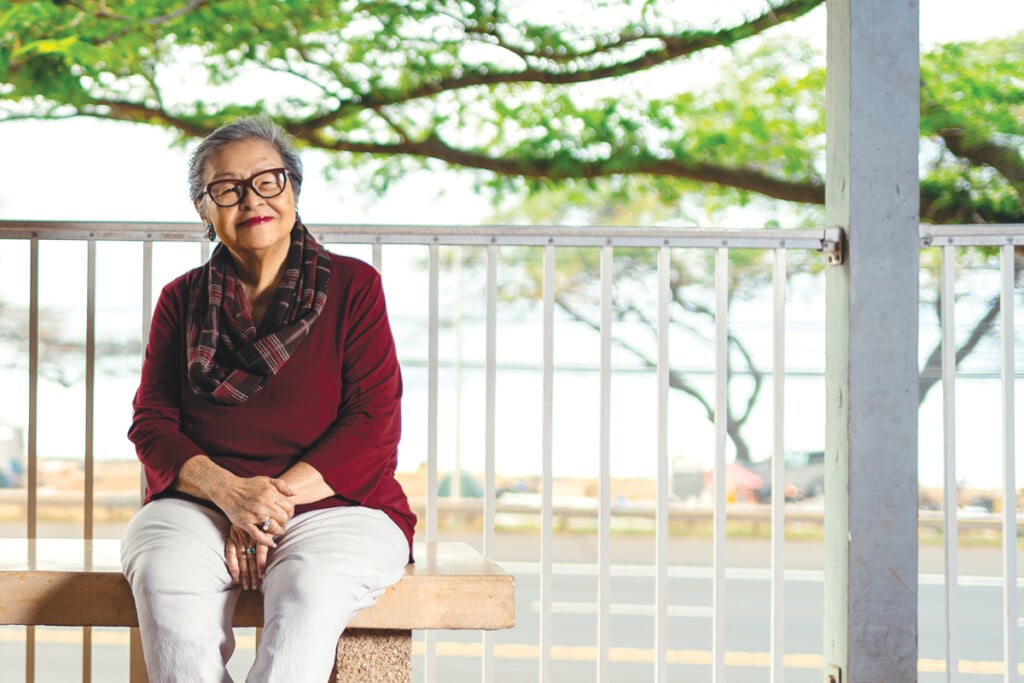WRITTEN BY JASMINE CHAGNON, MARTHA CHENG, ROBBIE DINGEMAN, DIANE SEO, MARI TAKETA AND KATRINA VALCOURT
ILLUSTRATIONS BY JT OJERIO OF ALOHA DE MELE
PHOTOGRAPHY BY AARON K. YOSHINO
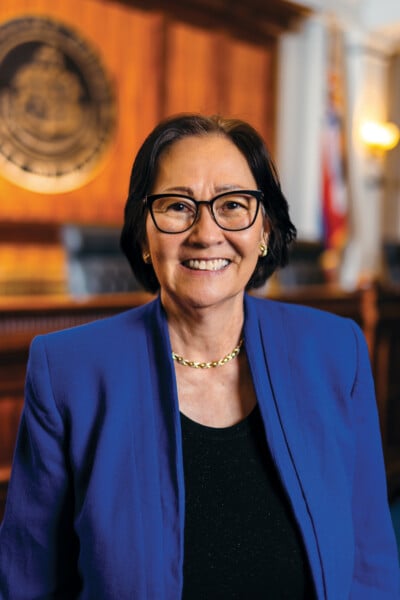
Sabrina McKenna
Associate Justice, Hawai‘i Supreme Court
While in high school, Sabrina McKenna played on the U.S. women’s military basketball team at Yokota Air Base in Japan.

In her 30 years as a judge, state Supreme Court Associate Justice Sabrina McKenna has earned a reputation as a leader in advocating for equitable policies for those often pushed aside by the legal system. “Everybody deserves to be treated with dignity,” she says.
Over her career, McKenna, 65, has presided over hundreds of criminal, domestic violence and civil cases, and her judgments have challenged governmental and institutional practices that hindered the public’s ability to have a voice, and helped the public navigate government bureaucracy.
She ruled, for instance, in 2013 that the state Department of Education was liable for not investigating sex abuse allegations against a Mōkapu Elementary schoolteacher, a decision hailed as a model for how public schools should handle such allegations. She also cleared the way for parents to receive child support payments by ordering the state to account for $3.5 million that remained in uncashed checks while parents waited for payment. At Family Court, she required the appointment of court interpreters for cases where language is a barrier. And in 2021, she was part of the majority that ruled lawmakers violate the state constitution when they replace the original content of a proposal with vastly different information late in the process, a tactic called “gut and replace.” The ruling was hailed as a victory for more public discussion.
McKenna achieved her classic American success story on a sometimes unconventional path that ultimately shaped her drive for justice and inclusion. She was born and raised in Tokyo, giving her a bicultural view of the world. Her mother was from Japan, and her father was a professor from the Midwest who taught U.S. military personnel and nurtured her love of sports. After her father died suddenly when she was 9, her mother worked for U.S. military hotels, where McKenna saw her mother face discrimination. “I told myself that someday, when I grow up, I’m going to get a good education. I’m going to get a good job, and I’m not going to treat people the way people treated my mother,” she says.
“Everybody deserves to be treated with dignity.”
McKenna moved to Honolulu at age 17 to attend the University of Hawai‘i at Mānoa. She won a Rainbow Wāhine basketball scholarship in 1974, as a very early beneficiary of Title IX, the groundbreaking federal legislation co-authored by U.S. Rep. Patsy Mink of Hawai‘i that prohibits discrimination on the basis of sex and opened access to women’s collegiate sports.
She earned a bachelor’s degree in Japanese, aiming for a career as an interpreter/translator, then enrolled at UH’s Richardson School of Law, where she was editor in chief of the law review. After graduation, she worked in private practice and as an assistant professor before becoming a state judge in 1993.
When McKenna was appointed to the high court, she publicly identified herself as a member of the LGBTQ community, weighing a reluctance to call attention to herself. As a judge, mother of three and member of the Asian Pacific Islander community, she saw in court the trauma of people rejected by their families.
“I realized that as an Asian American, it was especially important for me to be open and out,” McKenna says. “I wanted not just to provide hope to the youth, or to LGBTQ people, but also for their parents to see that you can be professionally and personally happy and successful being a member of the community.”
We asked: “How will you continue to make Hawai‘i a better place?”
BY JASMINE CHAGNON
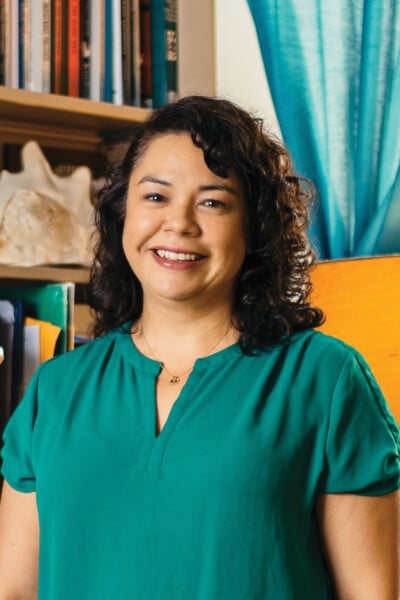
Brandy Nālani McDougall
Hawai‘i State Poet Laureate
Her late father, Jeff McDougall, a musician and composer, wrote the song, “My Island Maui.”

B randy Nālani McDougall believes poetry is far more than entertainment—it saves people. It saved her by providing an outlet for her to process and release past traumas, including sexual abuse and her father’s early death in a car accident.
McDougall is a poet, scholar, activist, mother, educator—the list goes on. And now, she’s been selected as Hawai‘i’s poet laureate. She succeeds the state’s first poet laureate, Kealoha, who held the title for the past decade. McDougall, who says poetry helps us to remember, understand, connect and release, writes commanding poems that push back on imperialism, militarism and colonialism. During her tenure, she plans to spearhead poetry readings and workshops at local
libraries and schools, including Hawaiian-language schools and special education programs. She also intends to work with community organizations across the Islands, including ones that support the transition out of incarceration. Her hope is to “change the idea that stories and poetry don’t matter, that they don’t have power, that they can’t change our world.”
Born and raised in Kula, Maui, McDougall, 46, is a “page poet,” focusing on words on a page as opposed to spoken words, and though she may be more on the quiet side, there’s no denying her impact. Like other Native Hawaiian activists—past and present—she conveys powerful messages. Her poems, teachings as an Indigenous studies professor at UH Mānoa and community work honor the ‘āina, and promote social and environmental justice and Hawaiian culture, language and history.
“Our words are powerful, and therefore,
we also need to reflect on, and understand,
our kuleana in using them …”
Listen to Brandy’s poem
McDougall thinks about the people in Hawai‘i who have suppressed their stories for generations. “I think about how painful that must have been, not only for those communities, but for all of us who may have had the chance to learn from and connect with those stories,” she says.
Even during high school at Kamehameha, McDougall saw a lack of literature of, or by, people of color. So, she sought out the work of Kānaka Maoli and Pacific Islanders. This hunger for something that speaks to her life and her commitment to uncovering it has empowered her as a poet, she says. She reflects on past experiences in her poem “Tiny Rebellions,” part of her first collection titled The Salt-Wind, Ka Makani Pa‘akai. Her second collection, ‘Āina Hānau, Birth Land, will be released this summer, and is dedicated to her daughters.
“Our words are powerful, and therefore, we also need to reflect on, and understand, our kuleana in using them, to ensure that they always have our best intentions behind them, and that we understand that words also may have lives beyond us through the people they reach,” she says.
We asked: “How will you continue to make Hawai‘i a better place?”
BY DIANE SEO
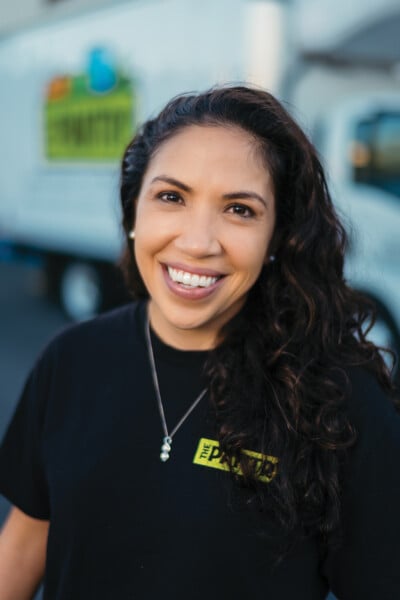
Jennine Sullivan
Executive Director, The Pantry
Jennine Sullivan, a Punahou graduate, worked for General Electric Co., then as an early member of GE’s startup incubator program.

A fter years in the corporate world, steering an international career in finance, venture capital and strategic consulting, Jennine Sullivan found her purpose in a 13,000-square-foot warehouse tucked in a Kalihi neighborhood.
It’s there at The Pantry, an O‘ahu nonprofit that provides food and other goods to those in need, where the 34-year-old has connected with her long-standing desire to be of service. “I was born and raised here, my family’s here, and I really wanted to come back and take a job that meant something to me,” she says. “I was interested in building things from nothing—and making a difference.”
Since moving from San Francisco to Hawai‘i in 2020 to serve as executive director, The Pantry has been resurrected and reinvented, serving about 4,000 eligible families, or 11,000 individuals, each month. This amounts to a massive 126,000 pounds of food provided to three main groups: kūpuna, disabled individuals, and working families struggling to make ends meet.
It’s the only weekly e-commerce food distribution operation in the Islands, with customers placing orders online, then picking up their goods in the warehouse lot, a system Sullivan designed. Every week, customers choose 10 dry or frozen items for each person in their household. Along with food, pet food, laundry detergent and other essentials are available, and certain refrigerated items like eggs, fresh fruits and vegetables are added to all orders. While there are other food distribution operations, The Pantry’s system allows clients to digitally select the items they need.
The organization began operating 20 years ago but closed in 2017 when its Kaka‘ako space was sold to a developer. It reopened in Kalihi in April 2020, shortly after Sullivan started working there, and a month after the pandemic began.
“We’re all committed to supporting our
senior citizens and working families so
they can live with dignity and have fresh,
nutritional food for their families.”
At the time, the warehouse was empty, a stark sight, which ultimately was a blessing that allowed Sullivan to create from the ground up. “At first, I was thinking, ‘Oh my gosh, what am I supposed to do at this place?’” Sullivan recalls. But she rooted herself, set up efficient systems and fostered a robust network of more than 1,300 volunteers.
The impact has been palpable.
It’s Tuesday afternoon, and there is a pulse in The Pantry’s Costco-esque space. You sense it as the volunteers, many of whom are seniors, intently mill about and pack orders for the next day’s pickup. A Huey Lewis tune from the ’80s plays in the background, lending a lively vibe. It’s a true grassroots operation with the community taking care of the community.
Sullivan is most proud of this volunteer force, because like her, it’s driven by heart. “They could be doing anything, and they’ve decided they want to make sure no one in our community goes hungry. They believe in what we’re doing,” she says. “We’re all committed to supporting our senior citizens and working families so they can live with dignity and have fresh, nutritional food for their families.”
So, after years in corporate boardrooms, Sullivan now spends her days on a forklift, stocking shelves and directing traffic at the drive-thru pickups, as well as raising funds to keep the operation going. “I love my job, and I’m grateful I have this opportunity,” she says. “I’ve worked in a number of jobs and this one is the highlight.”
We asked: “How will you continue to make Hawai‘i a better place?”
BY MARI TAKETA
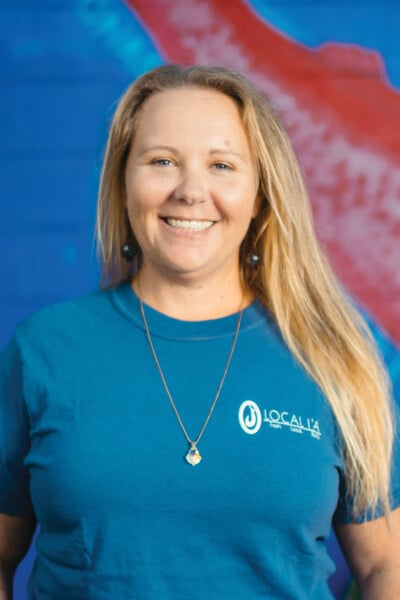
Ashley Watts
Owner, Local I‘a
This fishmonger is also an artist—Watts painted the mural of an octopus chasing a school of ta‘ape on Local I‘a’s wall.

W e have marlin today, which is great for sashimi. We’re gonna have snappers like ‘ōpakapaka, and I just ordered Kona kampachi.” It’s just before New Year’s and Ashley Watts, owner of Local I‘a, is ticking off seafood that will be on the sashimi and poke platters customers have preordered. What’s not on her list are ‘ahi, hamachi and salmon—the usual suspects people in Hawai‘i associate with sashimi—so Watts doesn’t have many orders. “New Year’s is something that people want ‘ahi for, so it just goes in a circle,” she says. “But I have a feeling there’s a way to advertise and say, ‘If you want ‘ahi, please go somewhere else,’ without being a butthead about it.”
Year by year, Watts, 38, has been redirecting people’s tastes away from imports and an over-reliance on ‘ahi. Local I‘a is driven by sustainability: It sells seafood that locally based fishers catch in local waters. Almost all of it comes from small-boat day fishers; none is from trawlers or longliners, which can set thousands of hooks at a time. That doesn’t mean Watts doesn’t sell ‘ahi, just that when she does, it’s from trollers who catch the bigeye tuna and other deep-sea fish with poles trailing single hooks from the backs of their boats. And while she doesn’t always have ‘ahi, she never has imported fish like salmon or hamachi.
Business for a seafood purveyor who never knows whether she’ll have ‘ahi—or any species, unless it’s farm-raised like kampachi—hasn’t been easy. The part of Watts’ calling that led her to the ocean, that was easy. She grew up in the Florida Panhandle in a family of cattle ranchers, hunters and fishers; her grandfather grew most of the rest of what they ate. Her mother gave her long days at the beach looking for treasures, scooping up blue crabs in season, snorkeling for scallops in a nearby bay. When Watts started asking “why” questions, she got a microscope. It was natural that this sand-tousled child would become a marine scientist. A job as a longline fishing observer brought her to Hawai‘i, where she got an online master’s degree in engaging the community in marine conservation. That, she says, “was when I really realized what I was here to do. That’s when I decided I didn’t want to have a job where I wouldn’t be able to make that difference.”
“We are trying to change
people’s behavior to eat what the ocean provides
instead of having preconceived desires.”
She’s been at it about seven years. The slow process of developing trust and relationships with fishers was repeated with chefs and others, and went hand in hand with learning how to run a grassroots business. Watts started out buying catches from three or four fishers. Today she buys from a core of about 15, plus another 50 semiregulars, and wholesales to Farm Link Hawai‘i, Kahumana Organic Farms, and restaurants including Fête, Heyday, La Vie, Brick Fire Tavern and Mud Hen Water. Her 50 initial CSA—Community Supported Agriculture—subscriptions have quadrupled. She does catering, offering things like poke and gumbo, and sets up a weekly booth at the Sunday Mililani Farmers Market. On Thursdays, Fridays and Saturdays she props a chalkboard menu of the day’s offerings outside Local I‘a’s kitchen in Kaimukī. And once a month she leads a class, in which she breaks down a whole fish and teaches people how to cook it.
“We are trying to change people’s behavior to eat what the ocean provides instead of having preconceived desires,” Watts says. “It’s shown me that it takes a community to make it through, and we have to help and support each other. And that’s what I’ve been trying to do.”
We asked: “How will you continue to make Hawai‘i a better place?”
BY KATRINA VALCOURT
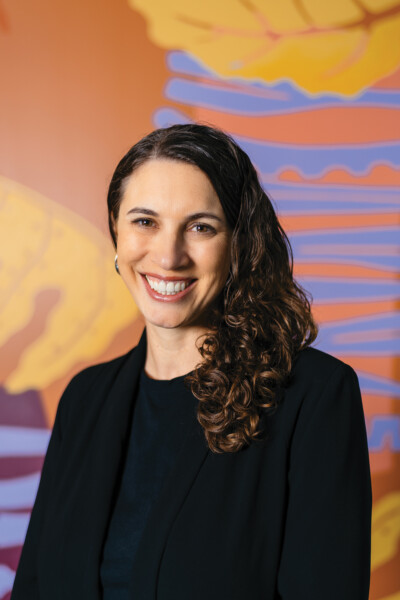
Dawn Lippert
CEO, Elemental Excelerator
Lippert served as co-captain of the women’s club soccer team at Yale while pursuing a bachelor’s degree in environmental studies.

I t’s an exciting time to work in the climate sector, mainly because “It’s not its own sector anymore,” says Dawn Lippert, who has dedicated her career to fostering clean energy. “What’s critical right now is the idea that solving climate intersects with every industry. … Every job can be a climate job.”
As CEO of Elemental Excelerator, a Honolulu nonprofit that funds tech companies and projects invested in climate repair, her message is clear: We—everyone, every industry—must commit to decarbonization. And not just for the sake of the Earth, but as a way to rectify social and environmental injustices that have impacted certain communities, such as Native Hawaiians, disproportionately.
Since the launch of Elemental Excelerator in 2009, the nonprofit has funded more than 150 technology companies in Hawai‘i and abroad. One of its latest success stories is a partnership it funded and facilitated between the Hawai‘i ‘Ulu Cooperative and Propagate that resulted in a $60 million federal grant to diversify and expand ‘ulu agroforestry production in the Islands, which will address food insecurity and help the local economy.
Through such initiatives, Lippert, 38, is committed to taking lessons learned locally and scaling them internationally, resolute in her belief that Hawai‘i’s innovative endeavors are models worth sharing beyond our Islands’ borders. “We want to be woven into the fabric of [global] transformation,” she says.
Lippert says the rest of the world also can learn from such local values as kuleana and working with a humble spirit, which she aims to instill in her own operations. “We can take the values of Hawai‘i and bring them elsewhere,” she says.
“What’s critical right now is the idea that
solving climate intersects with every industry.
... Every job can be a climate job.”
She is likewise passionate about diversity, equity and inclusion in the workplace, which means bringing more women into the industry. In 2010, she formed the local organization Women in Renewable Energy, or WiRE, with some “really extraordinary” women to enable more connectivity, relationships and professional development among women working toward local sustainability. WiRE now has more than 100 members.
One of the women Lippert asked to be on WiRE’s advisory board, Connie Lau, served as CEO of Hawaiian Electric Industries for 15 years. HEI was the founding corporate sponsor for Elemental Excelerator, and Lau also served on Elemental’s board. “Dawn has worked tirelessly to advance women as leaders in clean energy,” a traditionally male-dominated industry, by hiring mostly women to the Elemental Excelerator team, as well as looking specifically to fund startups headed by women, Lau says. Lau also nominated Lippert to be a Clean Energy Education and Empowerment ambassador, which recognizes role models for women seeking careers in clean energy. She was appointed to this role by the U.S. secretary of energy in October 2022.
Beyond widening the field for women, in 2021 Lippert co-founded the spinoff Earthshot Ventures, a for-profit venture capital company. “It’s also important to show you can raise capital for Hawai‘i” with a mix of local and foreign investors, which “creates dynamism,” she says.
Looking out a floor-to-ceiling window of Elemental Excelerator’s 12th floor Downtown office, we see the mountains, the ocean and every building in between, including the Hawai‘i State Capitol. Lippert, who grew up in Seattle and started coming to Hawai‘i for work in grad school, points to the “totally unprecedented alignment” over the past few months between local and federal government and the private sector to address climate issues. This includes the Bipartisan Infrastructure Law, the CHIPS and Science Act and the Inflation Reduction Act, along with Gov. Josh Green’s clear climate focus (he proposed spending $100 million of the state’s budget on addressing climate change).
“That’s the context in which we’re working,” she says. “Because we’re an island, everything is already related,” and on a scale this small, it’s much quicker to show impacts across sectors. “It’s an incredible opportunity for Hawai‘i.”
We asked: “How will you continue to make Hawai‘i a better place?”
BY MARTHA CHENG
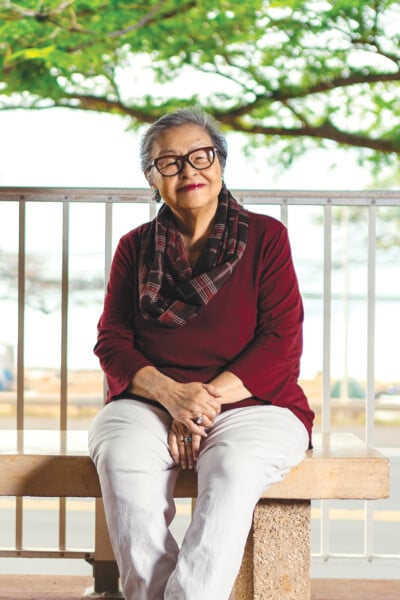
Puanani Burgess
Zen Buddhist priest, poet, community facilitator and activist
Small world: Burgess and Justice Sabrina McKenna attended law school together until Burgess left to focus on community work in Wai‘anae.

P uanani Burgess begins with “guts on the table.” She says, “Hawaiians understand your deepest thinking comes from below your belly button, your na‘au.” Or, in English, “guts.” “I’m always trying to get people to go to the place of their gut and tell stories from there.” In her sessions, the stories start with names. “The nametag name is not enough. When you tell the story of your name, you tell the story about your family, what they hoped for you, you tell the story about your culture.” The second story is of your community, or of belonging; and the third, of your gift, or hope. As a facilitator, it helps her read the room. “I’m trying to understand who’s here and how are they showing up, from where their depth is and where their hope is,” she says. And as a group, it helps build “respect and appreciation for the way other people see things and how they come to see it that way.”
For the first 27 years of her life, she was Christabelle Yoshie. She was born in Wai‘anae in 1947 to a Hawaiian mother and Japanese father, and at that time, “a marriage between those races, at least for the Japanese side of it, was not comfortable,” she says. “So, my mother’s strategy in order to make me a part of my father’s family, was to name her child after her husband, Christopher Yoshiyuki Sonoda. And then she added Puanani,” so that it would be there if “that’s who you choose to be.” The first time Burgess used Puanani as her first name was on a job application for the Polynesian Cultural Center, so “they would know I was Polynesian,” she says with a laugh.
In addition to multiple names, Burgess has many titles: Zen Buddhist priest, poet, community leader, activist, aunty. (These days, she says, “Aunty Pua is my role. Every society needs elders. Aunty is an earned place.”) About 50 years ago, she worked to stop the military bombing of Kaho‘olawe and became an advocate for the Native Hawaiian community in other struggles. But a turning point came in the ’80s, during the West Beach (Ko Olina) conflict between the developers and community members. In the mediation facilitated by Tenshin Tanouye Roshi at the Chozen-ji temple in Kalihi, she went from seeing the Japanese-national owners of the development “as an enemy to be defeated at all costs,” to “watching the role of culture in the mediation and how that culture allows you to come to the middle where both exist, not necessarily in harmony, but respectfully,” she says. As a result of the conversations, funds were committed to community-based economic development and infrastructure, leading to initiatives including a mental health center and aquaculture project in Wai‘anae. Soon after the experience, Burgess began her training as a Buddhist priest, and has since spent her life deepening understanding and empathy in groups and developing processes she calls “building the beloved community.” She has brought this practice to countries from Romania to South Africa and across Hawai‘i’s institutions, from University of Hawai‘i campuses to the state Women’s Community Correctional Center.
“Aunty Pua is my role.
Every society needs elders.
Aunty is an earned place.”
“In building the beloved community, empathy is the core experience I wish people to have,” Burgess says. “A lot of people interpret empathy to mean that we are in agreement. But empathy really has nothing to do with agreement. I’m not looking for you to agree with me. I’m looking to understand so that even as we disagree, I can still respect you.”
Burgess’ work has been integrated into the first-year orientation at UH West O‘ahu, as well as a team dynamics course for students and professional development program for teachers. Katrina Abes, who helped bring Burgess’ processes to the campus, says, “When we’re working in groups or even in a classroom, we have this implied understanding that we know how to work in them. But we don’t have that skill building in how to work through conflict. So, using Aunty Pua’s framework, we begin to better understand how we work with others by understanding how we are ourselves.”
We asked: “How will you continue to make Hawai‘i a better place?”
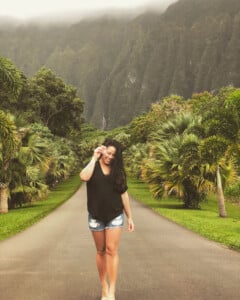
About Our Cover Artist
JT Ojerio of Aloha de Mele was born and raised on Oahu. She’s heavily inspired by other artists and their influences, as well as all the beautiful things in Hawai‘i that surround her. For the cover, she says, “I was excited and humbled to create an image that wasn’t about me and my artwork. It was about all the women who are featured inside the issue and how I could sum up their essence in one piece.”
